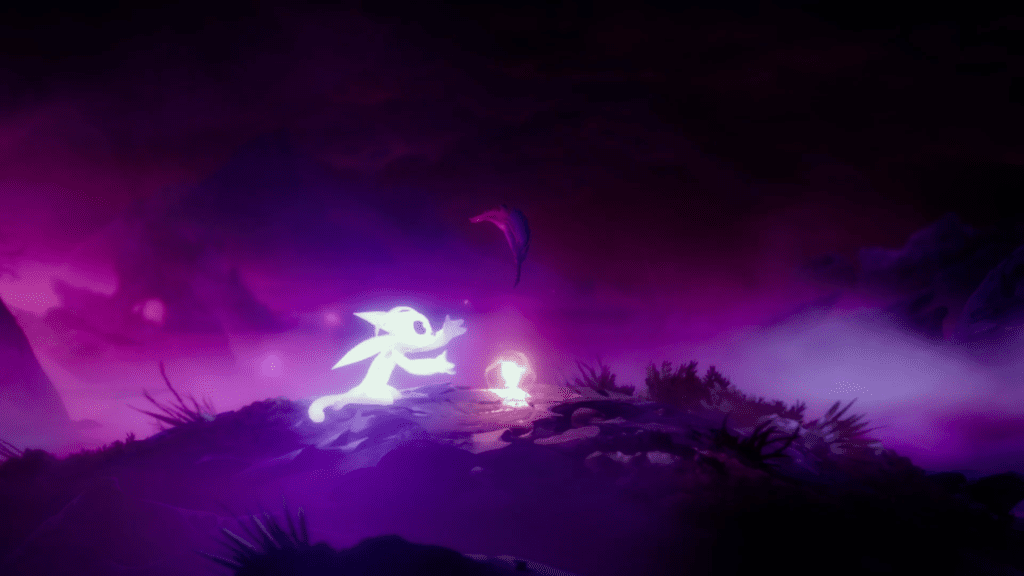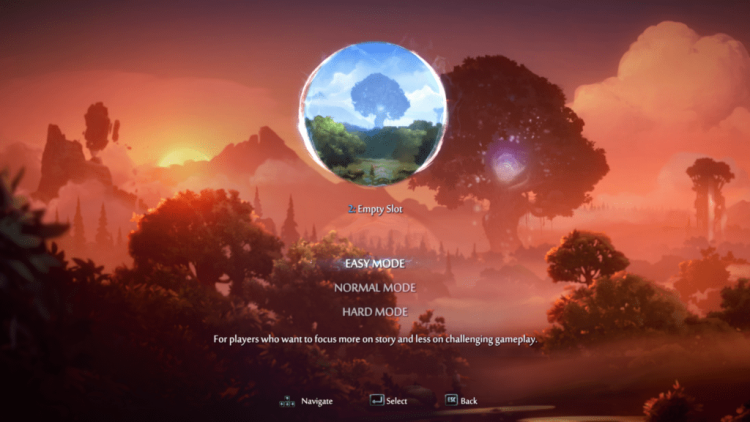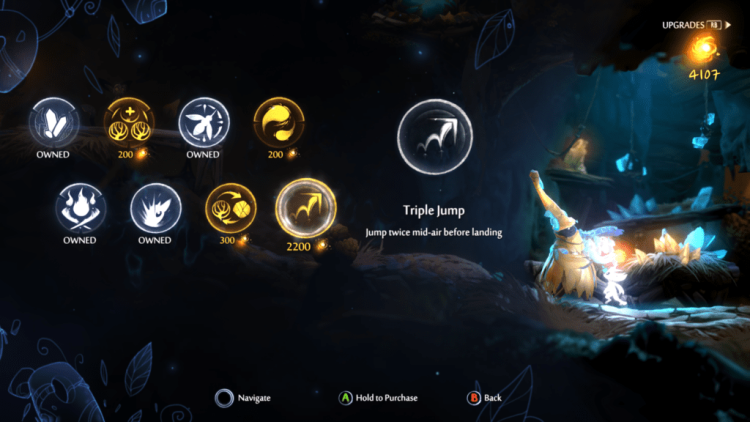Ori and the Will of the Wisps released just yesterday, and despite delays and anticipated patches, it offers many impressive new features. You once again play as Ori, except this time instead of exploring the forest of Nibel, you are reviving the distant land of Niwen and aiding its many residents. This opens up a lot of fun and exciting new forms of play, built upon the beloved foundation of its predecessor.
However, regardless of how confident you are in your own skill or familiarity with the Ori franchise, you may want to consider a few of these helpful tips along your journey.
Swallow your pride
I consider myself an average-skilled gamer. My childhood was full of platformers, and if the story is rewarding (which this is in this case), I can chip away at a difficult game for hours. When I saw the difficulty options, I thought, “I could speed through this on Easy, or I could get the real experience on Normal. And real gamers play at least Normal.”
I came to rue those words.
In Will of the Wisps, the difficulty settings change damage amounts—not the platforming difficulty. And while I’m someone who does well in combat, but still struggles with challenging platform combos, I still think starting on Easy would have cut the headache in half. If anything, it would have allowed me more time to practice the platform layouts. Instead, what was anticipated to be an 11-hour, back-to-front session turned into a 22-hour, expletive-laden battle.
It’s important to keep in mind that you can’t change the difficulty mid-game. What you choose at the start is what you commit to. The first hour of actual gameplay should give you a good idea as to how much you can handle, so if you decide Normal is too much, you can restart on Easy with minimal grief.
Also, consider this your warning: the final battle is exceptionally difficult as it is, and said difficulty has very little to do with damage dealt so much as keeping track of little Ori. There is no shame in experiencing the main storyline first, and going up a level in your next run.
Switch it up
With the Ability Tree gone and Spirit Shards in its place, it is very important to keep in mind that you can switch your melee moves mid-battle. I realized this during my third attempt at the boss battle in the Luma Pools which came in very handy. This is also key in Combat Trials, which will become the proving ground for your fighting style. Feel free to adapt as you see fit.
What’s also helpful is being able to use Spirit Light to purchase ability upgrades from various NPCs. You could probably get by without doing so, but there’s no reward for hoarding Spirit Light. I spent a lot of what I found with Twillen and Opher to upgrade skills and attacks. The one I found most helpful from Opher was Water Breath. Definitely invest in Resilience and Magnet from Twillen, especially if you’ve decided to play at a higher difficulty. Triple Jump is pricey, but worth it as well. In hindsight, it would have made a lot of my experience that much easier if I had purchased it earlier. That being said, it’s not progress-halting, so purchase to your taste.
Get on the map
Buy maps from Lupo; they don’t cost much Spirit Light, and they are always helpful. The only area he won’t have a map for is the Silent Woods because he is, understandably, too scared. I became so accustomed to anticipating his appearance in a new area that I searched every inch for him first so I could purchase the map.
Doing so not only gives you an idea as to the span of the area but also reveals sections you have yet to explore. (My inner-completionist was delighted.) It also gave me an idea as to where I could find a Spirit Well if I hadn’t already, and where I might encounter that area’s boss. Plus, once you’ve found landmarks such as a Combat Shrine or a Spirit Trial, you’ll automatically know how to get back to them to hone your skills.
Open-door policy
If you notice a blocked-off section, it’s worth spending some time figuring out how to unlock it. Most contain Life Cells or large balls of Spirit Light, some Combat Shrines or Spirit Trials. Makeshift lean-tos can be broken with Spirit Edge (a sword) or Spirit Smash (a hammer). Cracked, glowing walls match the color of the missile that can destroy it. For example, purple walls break under purple shots from purple enemies, such as bats. Doors/walls that look like faces with toothy maws can only open with switches, and typically signify unlocking the next stage in an area—best enter prepared.
Slow down, you’re movin’ too fast
One of my biggest early mistakes in Will of the Wisps was when I was first learning the Bash mechanic. This allows Ori to use enemy projectiles—and sometimes the enemies themselves—to catapult upward when a jump just won’t do. You’ll want to master this ability as much as you can as a majority of the game’s areas depend on it for both mobility and door-clearing. It is also a critical ability in the final boss battle, so take some time to practice before the big bad gets you.
An added benefit to this skill is that time stops as you aim. This is incredibly helpful while you’re in the process of puzzling out a new obstacle. However, this is also easily forgotten in the middle of a boss battle. Remember to take your time, even when the stakes are high. Impatience will get you nowhere in this game, even when the stakes (and location) are high.
Remember that if you’re already familiar with Blind Forest, you know half of the mechanics in Will of the Wisps. Let that familiarity motivate you to explore everything on the game map, rather than just the main questline.
Ori and the Will of the Wisps is available on Xbox Play Anywhere and Steam. Before diving into the land of Niwen, check out our official review.









Published: Mar 12, 2020 02:30 pm